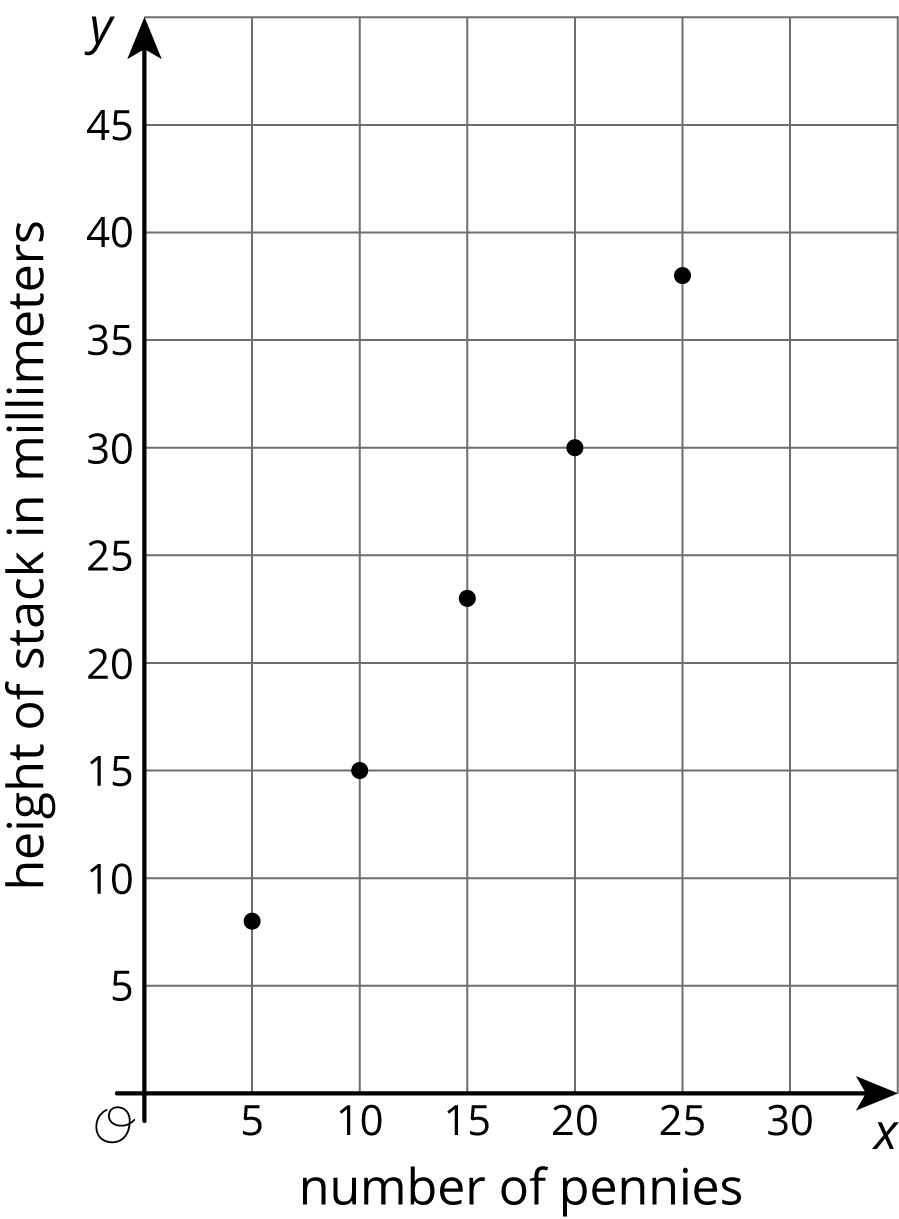When we measure the values for two related quantities, plotting the measurements in the coordinate plane can help us decide if it makes sense to model them with a proportional relationship. If the points are close to a line through $(0,0)$, then a proportional relationship is a good model. For example, here is a graph of the values for the height, measured in millimeters, of different numbers of pennies placed in a stack.
Because the points are close to a line through $(0,0)$, the height of the stack of pennies appears to be proportional to the number of pennies in a stack. This makes sense because we can see that the heights of the pennies only vary a little bit.


